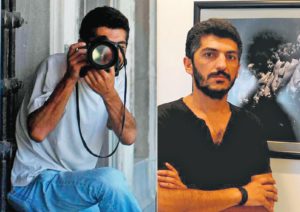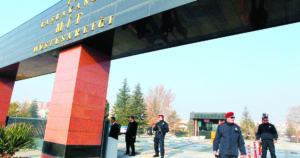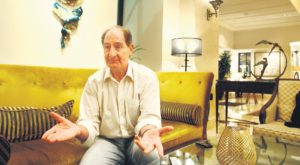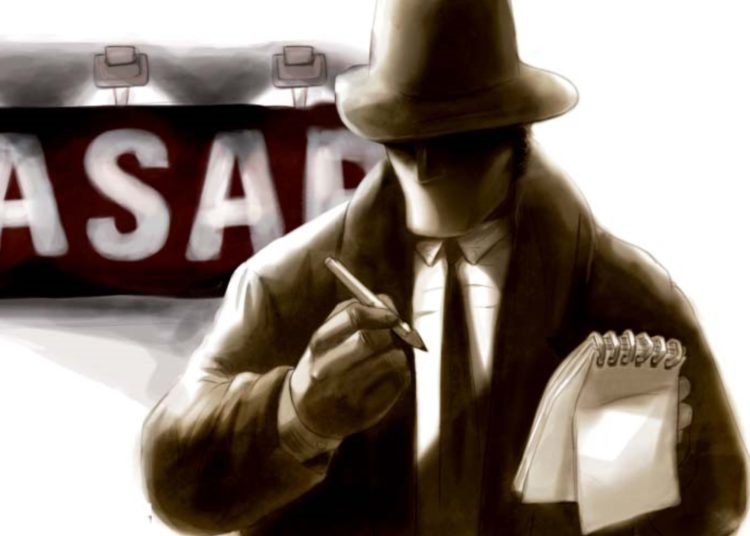Abdullah Bozkurt/Stockholm
A case file concerning Turkey’s National Intelligence Organization’s (MIT) infiltration of Agence France-Presse (AFP) with a Turkish journalist has provided important details on how the Turkish spy agency uses journalists as operatives, establishes news outlets to collect intelligence and monitors foreign journalists and their contacts.
The statements of Mustafa Özer, a 47–year-old-photojournalist who worked for Reuters before joining AFP in 2003, gave clues on the modus operandi of the Turkish intelligence service in using journalists and media professionals as agents, assets and informants.
The practice, still ongoing today, has certainly undermined the credibility of Turkish journalists and dealt a serious blow to the integrity of news outlets, which are supposed to promote the public interest against the abuse of government power in the surveillance and illegal profiling of unsuspecting people.
Özer was caught in a counterterrorism sweep launched by the Istanbul prosecutor’s office in December 2011 that targeted the network of the outlawed Kurdistan Workers’ Party (PKK), listed as a terrorist group by the US, EU and Turkey. The police found out he had been in contact with known suspects in the criminal case, communicating with people who were under surveillance, and wanted to bring him in for questioning about his activities.
AFP photojournalist Mustafa Özer’s statement to the prosecutor revealed how he worked secretly for the intelligence service:
When he was detained, he revealed his secret identity as a MIT agent in order to save himself from criminal charges and revealed many details of assignments from the spy agency since he was first recruited. The 46-page statement he gave to the police and five-page statement he made to the prosecutor also implicated MIT in some acts that may very well be classified as illegal under Turkish law.
Public prosecutor Bilal Bayraktar let him go after taking his statement but pressed further in his probe to find out if any law was broken by MIT while using him as an operative under the cover of a journalist. Bayraktar’s case was quashed before he managed to go further in his investigation, and he was later dismissed by the government.
In his statement Özer underlined that he had wanted to share with the police and other authorities what he had been doing with MIT on a couple of occasions but claimed the intelligence agency prevented him from doing so. MIT agents advised him against sharing information with the police, saying the operations were carried out abroad and not subject to review by the prosecutor’s office and the police.

Yet, his damning statements exposed how Turkish intelligence established front media outlets called Bağımsız Haber Ajansı (Independent News Agency, BHA) and Euroasia News Network Photo (ENNPhoto) to conduct spying activities. According to the details in his statements, MIT spied on foreign journalists, using Özer’s position at AFP to gain access to key people and places on the pretext of conducting interviews, covering events for the press and questioning high-profile foreign nationals who visited Turkey.
Neither of the outlets is currently active after their covers were blown and the intelligence agency scrambled to get rid of its footprint by shutting down the media outlets in March 2012. ENNphoto’s archived pages that were found on Internet Wayback give the impression of a legitimate news website although it was run by Turkish intelligence.
Invoice for Internet services of Euroasia News Network Photo, a front business run by Turkish intelligence:
MIT agents using fake names and email addresses associated with the website communicated with other journalists. The “photographer” section of the web page listed Turkish as well as American, Greek, Slovenian and Bulgarian photographers and photojournalists. Perhaps foreign journalists were thinking they were in fact cooperating with a legitimate media outlet and signed up as contributors.
ENNphoto published in English and focused on photography, while BHA was run as a news website in Turkish and published news articles. Monthly invoices for the ennphoto.com web server dated November and December 2011 show that the Radore Hosting company billed a man named Sezayi Erken for Internet services. Erken was a cameraman brought on board by Özer.
Top secret document issued by Turkish intelligence agency MIT on July 3, 2015 and signed by Umit Ulvi Canik, legal advisor to MIT chief Hakan Fidan, confirmed that Özer had worked for the spy agency between 2005 and 2015. The document was presented to the Istanbul Chief Public Prosecutor’s Office :
Özer was only 14 when he left home and dropped out of middle school to come to Istanbul in 1988 and started working as a porter. The first time he set foot in a media outlet was when he was hired as an office boy at the Sabah daily in 1989. He observed what reporters were doing and learned how journalists worked. He later worked on various assignments in the media group before he was hired by Reuters as a freelance photographer. His journey was cut short when he was convicted on fraud charges and sentenced to 11 months in prison.
Upon his release he continued to work with Reuters until he was offered a job by AFP in 2003. Özer was recruited by a MIT agent identified only by the first name of Cem in August 2005 and started collecting intelligence during AFP assignments in Turkey and abroad, passing information to the spy agency about the foreign journalists he profiled. He claimed he had volunteered out of a sense of duty, although he was receiving cash, secret intelligence notes and logistical support from MIT.
Excerpts from Mustafa Özer’s statement to the police:
Apparently both Özer and MIT were happy with the arrangement. While working as a photographer on assignment in northern Iraq, where his team covered Kurdish refugees and PKK militants in August 2005, Özer gathered information about hundreds of people and passed that intel to MIT along with photos and voice and video recordings.
Özer’s statement depicts an extensive series of meetings with PKK leaders that spanned a period of eight years and took the photojournalist to Iraq and various locations in Europe. His main contact was a man named Ismet Kayhan, who was working for a media outlet in Europe that was close to the PKK.
For him, this was not just providing copies of photos or recordings that he shot for AFP. He was calibrating his work according to specific instructions from MIT that asked him to take photos of landmarks that were not necessarily related to the journalism profession. MIT wanted pinpoint intelligence that might be needed in the event Turkish authorities decided to launch operations against PKK hideouts.
For example, in 2007 he accompanied a French cameraman on an AFP-sanctioned road trip to northern Iraq where he took pictures of a PKK camp, its layout and landscape under instructions from his handler at MIT. Upon his return he handed over the photos and video recordings to his MIT contact.

When Cem was assigned to another post by MIT and a new handler, Yaşar Hakan Yıldırım, entered the picture, things got busier for Özer. The new agent wanted to expand operations by using the photojournalist’s cover as an AFP employee and his easy access to various venues. The two decided to work on Kayhan’s profile, planning to use him as an unsuspecting asset to gain access to PKK operations in Europe. They cooked up a plan to establish a new photo and news service project to pull Kayhan in without triggering alarm or raising any suspicions.
Özer introduced the MIT agent Yıldırım under the fake name of Yusuf to Kayhan, describing him as an old acquaintance and businessman who wanted to sponsor the new project. Yıldırım was described as a man who was sympathetic to Kurds. Lured by cash promises, Kayhan took the bait and met with the MIT agent according to Özer’s statement. Later, another MIT agent named Hüseyin Emre Kuzuoğlu joined the team. Kayhan functioned as a gatekeeper for Turkish and foreign journalists who planned to go to northern Iraq to meet PKK leaders for interviews. He was passing information about these journalists as well as other information he collected from his PKK contacts to Özer and Yıldırım.
Mustafa Özer worked as a photographer for Reuters and AFP:
In October 2009 MIT saw a new opportunity when AFP asked for an interview with PKK commander Murat Karayılan. As had happened in past encounters, Kayhan set up the meeting and the AFP team including Özer went to the village of Levje in northern Iraq’s Kandil Mountains to talk to the commander. Özer informed MIT about what he had observed at the PKK compound, the location of Karayılan and his general mood while talking to reporters.
In April 2010 Özer and the two MIT agents, joined by a third agent named Emrah Erkut, went to the German city of Frankfurt to meet Kayhan in person and to talk to him about the BHA news agency project. The team managed to gain Kayhan’s trust, gave him cash, recorded all the talks and took pictures. MIT was quite happy with the result. Yıldırım even described the performance as MIT gaining entry to the brain center of the PKK’s European operations.
The project took off after the trip to Germany, and Özer was given a $12,000 expense account plus a monthly salary. The agency kept sending cash every month, and Özer submitted receipts and invoices to justify the expenses. In August 2011 Kayhan set up another interview with Karayılan in Iraq and through the interview, MIT identified in exactly which house the PKK commander was staying on the compound.
In his statement Özer also revealed how he managed to plant hacking software in the computers of the Fırat News Agency (ANF) during a visit to the Netherlands. Access to the ANF office was facilitated by Kayhan, who introduced Özer as his friend. Using a flash drive provided by MIT, Özer installed the software on the ANF computers.
Secret intelligence document about targets was handed over by MIT to Mustafa Özer:
In November 2011 MIT asked him to cover a Kurdish conference in Duhok in Iraq’s Kurdistan region and instructed him to befriend several targets to obtain information. A classified MIT document with background information on the targets was given to him to familiarize himself with the marks. He gathered information about the targets, took photos and passed them all to the agency. The secret MIT document was seized by the police when his home was searched, and Özer said during the interrogation that he was supposed to destroy the MIT document after reading but did not have a chance to do so.
While Özer had been busy with his spying business for MIT, he was having problems at AFP’s bureau in Istanbul, threatening staff members and treating Bureau Chief Kichel Sailhan disrespectfully. According to a letter signed on January 10, 2011 by Jean Louis Pany, deputy manager for Europe and Africa for the news service, and Mariele Eudes, AFP photo manager, Özer was issued a final warning for what AFP administrators described as “disrespectful conduct and unacceptable threatening statements.”
At the time Özer was already involved in a personnel dispute with AFP and filed a lawsuit against the news service in Beyoglu in 2010. He demanded that an AFP employee be fired, and the bureau chief asked the reasons for it, according to an exchange of emails between Sailhan and Özer. Apparently emboldened by the work he had done for MIT, Özer had difficulty keeping himself in check in the AFP office, getting into quarrels with employees.
Warning letter from AFP managers about the conduct of Mustafa Özer in the news agency’s Istanbul’s office:
When Özer was detained, the police also searched his apartment on December 20, 2011 and found a trove of documents, some from the intelligence agency. A handwritten note stated that an offer of espionage work was made by Nicolas Jean Francois Cheviron, a French national and an AFP reporter in Istanbul on the advice of a diplomat from the French Embassy.
In a written statement made to Istanbul prosecutor’s office on April 8, 2015 Özer explained what the note meant. He claimed that Cheviron was working for French intelligence and was the station chief for the French secret service. He bragged about having exposed a French intelligence officer. During the search of Özer’s home in 2011, police discovered private identity documents belonging to Cheviron such as residency papers.
In an April 2015 statement, Mustafa Özer repeated his claim that French journalist Nicolas Jean Francois Cheviron was a spy and that he was the one who exposed him:
In March 2011 Özer got a new assignment from Turkish intelligence that asked him to size up Brian Currin, a human rights defender and lawyer who helped establish the Truth and Reconciliation Commission in South Africa. Currin was visiting Turkey at the invitation of the Turkish Industrialists and Businessmen’s Association (TÜSİAD). MIT was curious about his intentions and the reasons for his visit to Turkey. Özer interviewed Currin under instructions from MIT, but the interview was never published.

Özer’s story is not an exception, and there are many journalists and media outlets operating in Turkey and abroad as part of the Turkish intelligence agency. In fact, the agency became further emboldened with new powers and immunities awarded it by the government of President Recep Tayyip Erdoğan. Prosecutors and police chiefs who had investigated MIT for illegal activities in violation of Turkish laws were punished with dismissal and imprisonment. As a result, MIT expanded similar media operations using journalists and news outlets to hide its clandestine operations and schemes.
Turkish prosecutors also indicted two MIT agents who worked with Özer, claiming that the agents had violated the Turkish Penal Code by not sharing the information they collected with the police and judicial authorities. Prosecutors also alleged that MIT officers violated the confidentiality of the ongoing criminal probe and tipped off a suspect about a detention warrant. However then-Prime Minister and current President Recep Tayyip Erdoğan rushed to change the intelligence bill, making it mandatory for prosecutors to seek the Prime Ministry’s permission to investigate MIT agents. When prosecutors asked for permission, Erdoğan did not allow the prosecution to move forward, on February 23, 2012. The spy agency was also opposed to the prosecution.
Secret MIT letter confirming that the government did not give permission to the prosecutor’s office to press charges against two indicted intelligence officers, Yaşar Hakan Yıldırım and Hüseyin Emre Kuzuoğlu:












